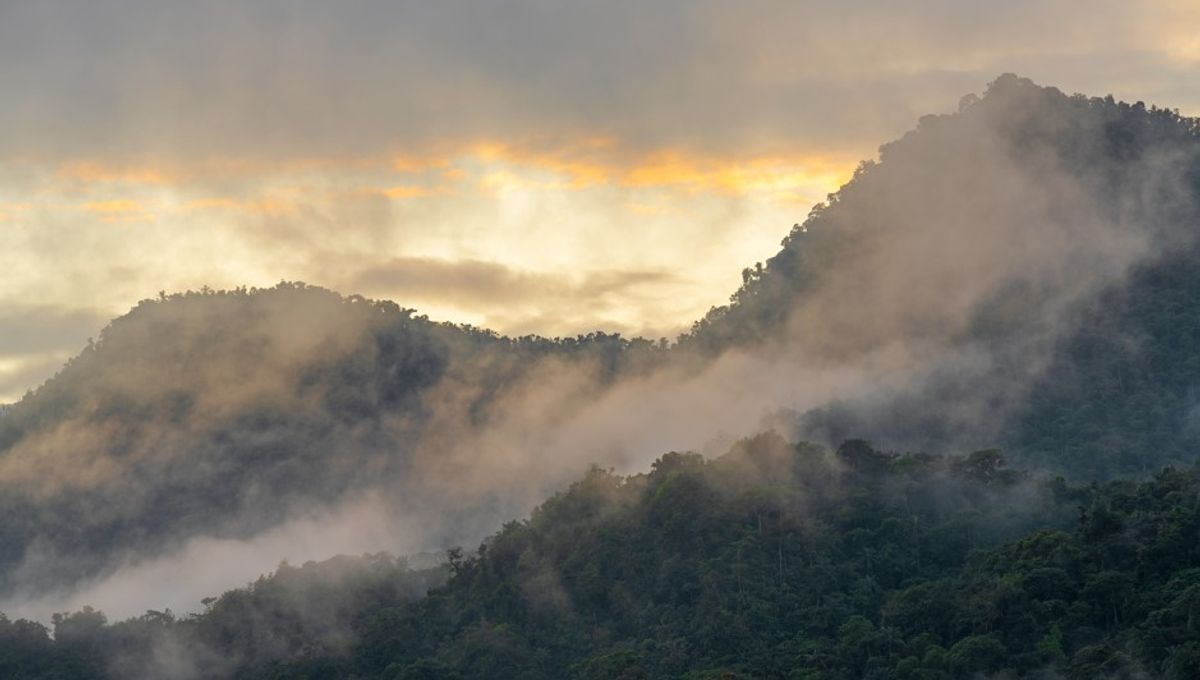
An ancient civilization that disappeared from the dense cloud forests of eastern Ecuador 1,500 years ago likely wasn’t obliterated by a massive volcanic eruption, as had previously been suggested. Instead, the mysterious culture appears to have gradually declined for reasons unknown, raising a number of questions as to what went on during the so-called “Lost City” of the Amazon’s final years.
The rest of this article is behind a paywall. Please sign in or subscribe to access the full content.
Located in the Upano Valley, where the tropical Andes slope towards the Amazon rainforest, the archaeological site contains over 7,000 structures connected by a series of roads and causeways, and is larger than Machu Picchu. Radiocarbon dating has suggested that the ancient city was first occupied around 700 BCE before being abandoned in 550 CE.
Until recently, it was assumed that the Lost City’s downfall had been abrupt and dramatic, with a layer of ash indicating that the site’s inhabitants may have been wiped out by an eruption of the nearby Sangay volcano. However, subsequent investigations have cast doubt on this theory, with some researchers suggesting that the ashfall at the site is not sufficient to represent a seismic catastrophe.
To investigate further, the authors of a new study examined sediments from the nearby Lake Cormorán, which turned out to contain no evidence of a sudden buildup of ash. This finding appears to negate the theory that the city suffered a Pompeii-like ending – so why did a culture that had thrived for 1,200 years suddenly vanish?
Well, according to fossilized pollen grains in the lake sediment, it didn’t. Instead, agricultural activity in the area around the site seems to have gradually decreased over several centuries leading up to the site’s eventual abandonment.
Based on the plant species represented in the sample, the researchers conclude that the city’s heyday lasted from around 500 BCE to 200 CE, when maize cultivation and forest management practices were at their peak. During this period, the pre-Columbian inhabitants of the Upano Valley intensely planted and coppiced alder in the surrounding forests, presumably as a source of firewood and building materials.
The team’s findings also suggest that the Amazon’s Lost City may have been more extensive than previously thought, and that the site’s population altered the make-up of local forests over an area extending 10 kilometers (6.2 miles) from the main archaeological complex.
However, pollen records indicate that the natural forest composition was gradually restored between 200 and 550 CE, hinting at a reduction in human activity in the region. This, in turn, suggests that the once flourishing city may have entered into a cycle of decline that lasted for around 350 years, culminating in its desertion.
In the absence of any cataclysmic event to explain this demise, however, the researchers admit that their findings “raise a fundamental and yet unanswered question as to why a site with so much invested effort was gradually abandoned.”
The study is published in the journal Nature Communications.
Source Link: "Lost City Of The Amazon" Wasn’t Destroyed By A Volcano After All